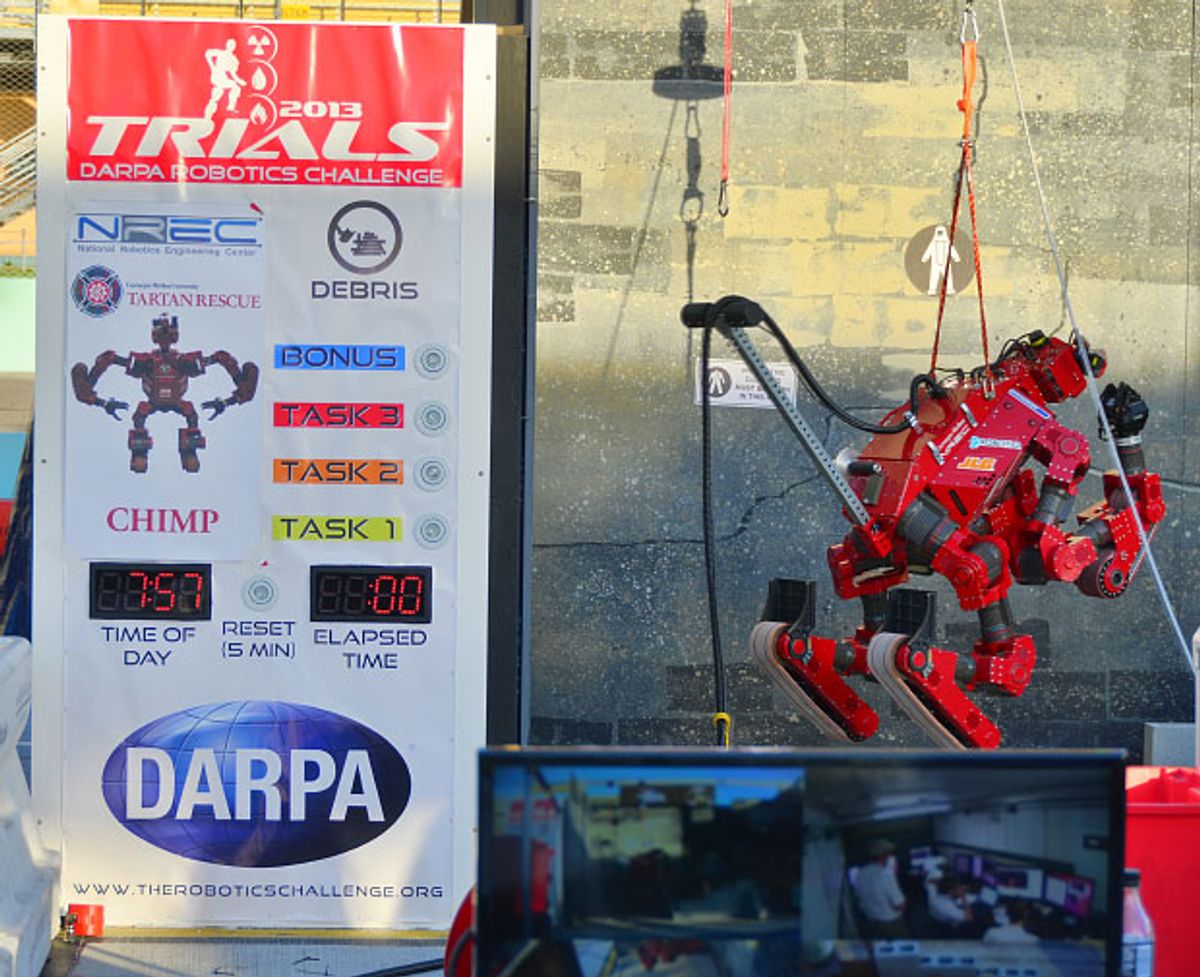While we gave you a rundown of all of the DRC events a while back, it's probably worth getting a refresher, especially if you haven't had a chance to immerse yourself in the commentated event livestream. DARPA has put together some video walkthroughs of the actual courses, which we've got for you here, along with an overview of how the scoring system works.
Okay, so, scoring. Each task is worth a maximum of four points. Generally, tasks are subdivided into three obvious parts: three valves to turn, three doors to open, three sections of stairs to climb, and so forth. Each task part is worth one point. The fourth and final point is a bonus that gets awarded if the robot completes all three tasks without any direct human intervention at all. Time is not a factor (taking 30 seconds and 30 minutes to complete a task is worth the same amount of points), unless there needs to be a tiebreaker at the end of the competition tomorrow, in which case the faster robot wins.
For those of us at the event, we can watch dedicated task scoreboards (pictured above) with lights that are triggered when the robot earns points. However, DARPA has repeatedly stressed that these scoreboards are always unofficial and occasionally wrong, and they're not distributing detailed scores until the end of the entire event. We do have score totals, though, and as of Saturday morning, here's how things look:
The front page of the DRC website is the place to go for the latest score updates, although they're generally about an hour behind the completion of each task.
Keep in mind that on Friday, some robots competed in five tasks (for a possible maximum of 20 points), and some robots competed in only three tasks (for a possible maximum of 12 points). Furthermore, the three task "track" is generally accepted to be harder than the five task "track," as the three tasks are ladder climbing, traversing debris, and driving.
Now that we've gotten that out of the way, here's DARPA to take us through all of the task courses. Note that, as we've talked about before, part of each task is that DARPA dynamically modulates the communication bandwidth between the robot and its operators. The bandwidth changes about every minute from a very good cell phone connection to a very bad cell phone connection, and depending on the task, some teams just wait until their connection improves before having their robot proceed.
Oh, and the other thing to note is that all of the tasks are optional. Teams can skip tasks entirely, or they can end their run at any point they choose. Many teams are completely skipping the vehicle task, for example, or only attempting to climb up one rung of the ladder task, as opposed to trying to get to the top. There are a variety of reasons for this, but generally, teams are conservative both to protect their robots, and to focus their energy on tasks in which they think they can be the most successful.
Doors
Debris
Valves
Wall
Hose
Terrain
Ladder
Vehicle
It's not mentioned here, but teams can begin with their robot already in the vehicle: there is no vehicle entry component to the task in the DRC Trials, although there will be in the DRC Finals.
Evan Ackerman is a senior editor at IEEE Spectrum. Since 2007, he has written over 6,000 articles on robotics and technology. He has a degree in Martian geology and is excellent at playing bagpipes.




